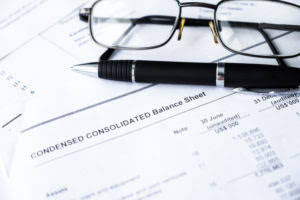
An expense is an operational cost that a company incurs to generate revenue. Expenses and revenue are listed on an income statement, but not on a balance sheet with assets and liabilities. Current liabilities are expected to be paid back within one year, and long-term liabilities are expected to be paid back in over one year.

Simply put, a business should have enough assets (items of financial value) to pay off its debt. In the U.S., only businesses in certain states have to collect sales tax, and rates vary. The Small Business Administration has a guide to help you figure out if you need to collect sales tax, what to do if you’re an online liabilities in accounting business and how to get a sales tax permit. On a balance sheet, liabilities are listed according to the time when the obligation is due. Liabilities must be reported according to the accepted accounting principles. The most common accounting standards are the International Financial Reporting Standards (IFRS).
Examples of Liabilities
You should generally monitor current liabilities (also known as short-term liabilities) closely to ensure you have enough liquidity for your outstanding debts. As mentioned, a liability is anything your company owes, and typically this is money. Owing money to somebody or something is considered undesirable in our personal lives, although perhaps unavoidable. But every business has at least a handful of liabilities on an ongoing basis. It’s a normal part of how things work and it’d be almost impossible for a business to exist without them. Once you know your total liabilities, you can subtract them from your total assets, or the value of the things you own — such as your home or car — to calculate your net worth.
In other words, the key is in determining what you are paying for and what purpose it serves. Liabilities are a part of your overall financial health, but they might not be harmful as long as you keep them in check. We believe everyone should be able to make financial decisions with confidence.
What Are My Financial Liabilities?
We categorize these liabilities into current or short-term and non-current or long-term liabilities based on the timeframe for settling the debt. In that case, we classify it as a current liability, whereas if the liability is payable after one year, we designate it as a non-current liability. The liabilities of a business must be recorded and accounted for to keep track of all costs. In order for the business to keep track of what is owed to others, they should be recorded within the business’s accounts and financial statements. The balance sheet, for example, consists of both the liabilities of a company, as well as its assets.
In business, assets are the things that are considered of value for the business. These are the items owned by the business, which increases its overall worth. Liabilities, on the https://www.bookstime.com/ other hand, decrease the overall value since they are deducted from the business’s revenue. Listed in the table below are examples of current liabilities on the balance sheet.
Long-Term Liabilities
Strategies like debt consolidation and the “debt avalanche” — attacking debts with the highest interest rates first — can help you pay off debt efficiently. “Where people start getting into a lot of trouble is they start buying things on debt assuming they’re going to have money left for their other goals, and it never ends up working that way,” Swanburg says. Along with the shareholders’ equity section, the liabilities section is one of the two main “funding” sources of companies.
- Adam received his master’s in economics from The New School for Social Research and his Ph.D. from the University of Wisconsin-Madison in sociology.
- If you’re unhappy with your net worth figure and believe liabilities are to blame, there are steps you can take.
- Because most accounting these days is handled by software that automatically generates financial statements, rather than pen and paper, calculating your business’ liabilities is fairly straightforward.
- If you have a loan or mortgage, or any long-term liability that you’re making monthly payments on, you’ll likely owe monthly principal and interest for the current year as well.
- If you know that you’ll be paying the tax within 12 months, it should be recorded as a current liability.
- AP typically carries the largest balances, as they encompass the day-to-day operations.
